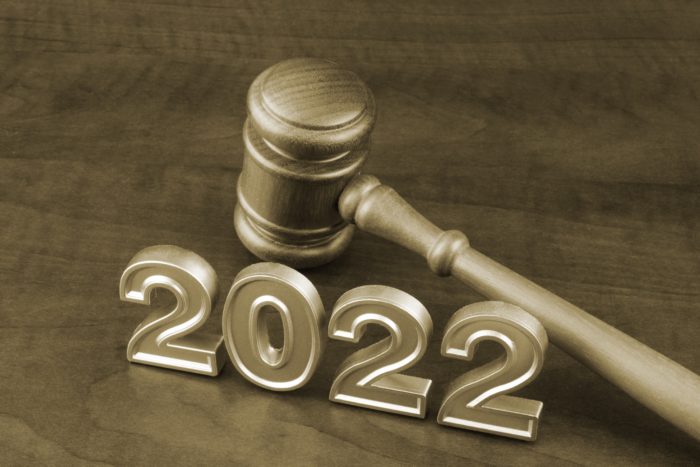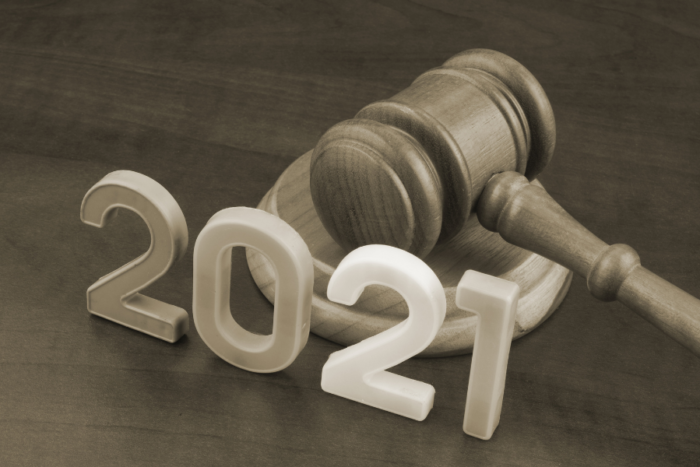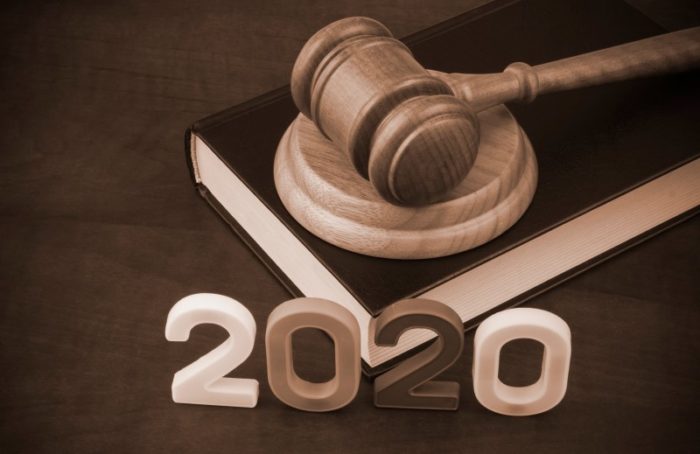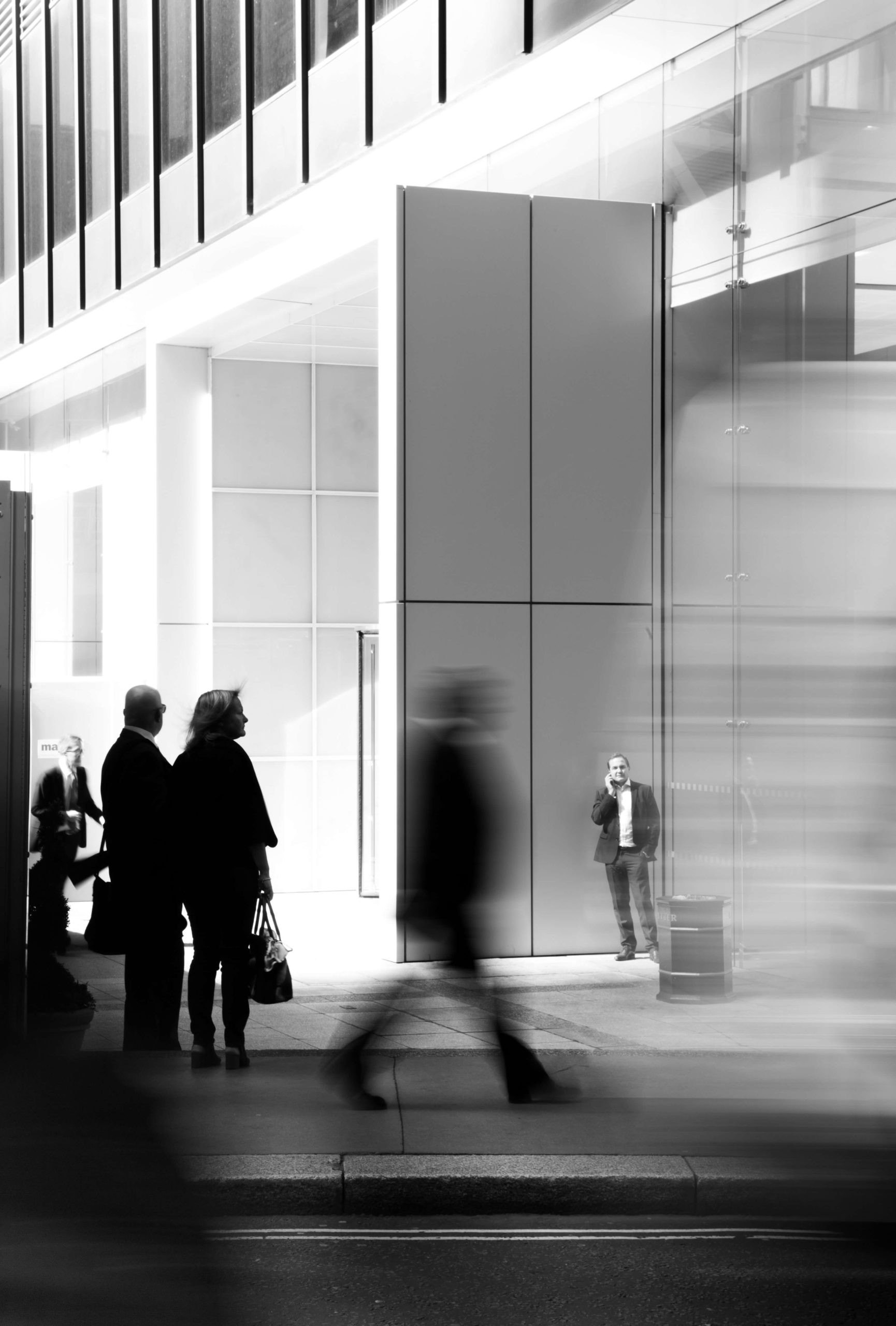
Objection. Hearsay, Your Honor. We have heard it on every legal television show. But what does it actually mean? And is hearsay admissible in court?
Section 1
Section 2
Section 3
Section 4
Section 5
What Does Hearsay Mean in Court?
The definition of hearsay in law is an out-of-court statement that is used to prove the truth of the matter asserted, and it is generally inadmissible in court unless it meets one of the listed statutory exceptions.
Under What Circumstances Is Hearsay Admissible in Court?
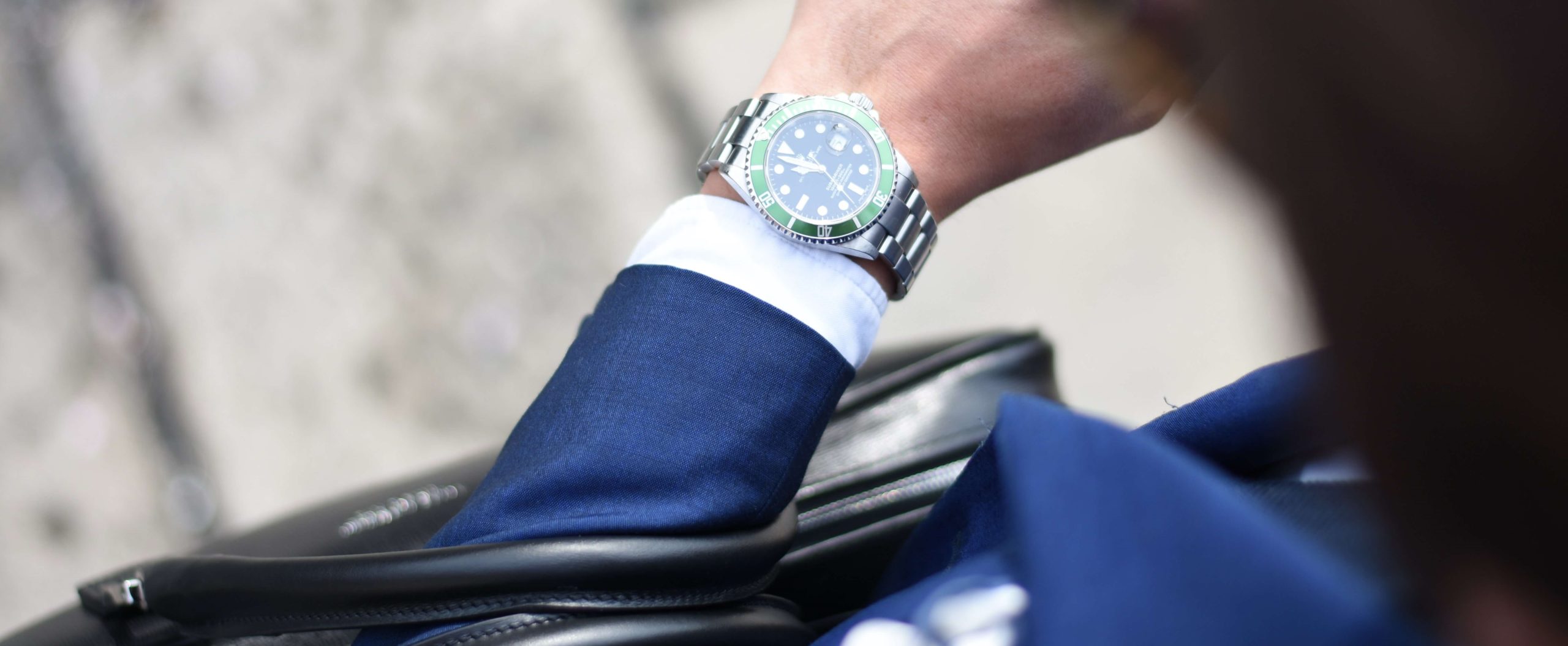
Background: Berroteran v. Ford: Plaintiff Tries to Admit Videotaped Former Deposition Testimony at Trial
In Berroteran, Plaintiff opted out of a federal class action lawsuit against Ford so he could file his own suit.[4] As part of the federal class action, or the subsequent related California opt-out litigation, nine former and current Ford employees were deposed on videotape.[5] Ford’s counsel represented the deponents during the depositions, counseled them beforehand, and raised objections, but did not ask any questions of their own — except for brief clarifying questions at two depositions in a related California opt-out litigation.[6]
Opposing Party Argues Plaintiff’s Using of Deposition Testimony at Trial Does Not Meet Former Testimony Hearsay Exception
When Plaintiff tried to admit designated portions of the videotaped depositions in his own suit, Ford filed a motion in limine, which was granted, to exclude the depositions as hearsay under Evidence Code section 1291(a)(2).[7] In doing so, Ford relied on Wahlgren v. Coleco Industries, Inc. (“Wahlgren”), a 1984 California Court of Appeal case establishing a “categorical bar” on admitting prior deposition testimony under this section unless the statute requirements set out by the Legislature were met.[8]
In response, Plaintiff filed a writ of mandate with the Court of Appeal to deny Ford’s motion in limine, which was granted. In so doing, the Court of Appeal held that Ford had “a similar interest and motive” to examine their own witnesses during their prior depositions, such that their testimony should be admissible in this subsequent action, and placed the burden on Ford to disprove any similarity of interest and motive in the present action.[9]
Court of Appeals Decision Is Reversed, Easing Categorical Ban on Admission of Former Deposition Testimony at Trial
The matter was then appealed to the California Supreme Court, which accepted the appeal. After a full briefing, amici curiae, and several days of oral argument in the Supreme Court of California, the parties settled the matter out of court. But because this raised a novel issue of law, the Supreme Court decided to rule on the matter despite the settlement, and reversed the Court of Appeal’s decision, holding that: (1) in this instance, the prior deposition testimony was inadmissible hearsay in a subsequent action; (2) Ford did not have the burden of proving it lacked a similar interest and motive in order to exclude such former testimony; and (3) Section 1291 established only a general bar against admitting prior deposition testimony (as opposed to a categorical bar), which could be overcome in certain specified circumstances. [10]
Considerations in Berroteran v. Superior Court Application of Evidence Code 1291 (a)(1) Should Be Based on Practical Considerations
Evidence Code section 1291 contains an official comment by the Legislature, offering considerably more insight on its application than the guidance provided with most statutes. Specifically, it establishes that the determination of similarity of interest and motive under California Evidence Code 1291(a)(2) should be based on practical considerations as opposed to the similarity of the party’s position in the two cases. One of these practical considerations is whether the prior testimony was taken during a trial or during a deposition. The court emphasized several factors that are treated differently in trial versus deposition that impact a party’s “interest and motive,” and consequently, could stop the prior testimony from meeting the former testimony hearsay exception.
Moreover, the deposition of Ford’s Person Most Qualified, conducted in one of the California opt-out ligations, “reflects substantial discussion about its intended future use.”[11] While Ford’s counsel claimed that they lacked authority to “bind other counsel” regarding future use of that deposition, the parties agreed to “use a copy of the [deposition] transcript and a copy of the video for all purposes” for all cases regarding that particular defect where Plaintiff’s firm was the current counsel of record — in addition to naming a few other then-pending California opt-out cases, but not Berroteran.[12]
The Law: Berroteran v. Superior Court Changes Categorical Bar for Former Testimony Hearsay Exception to General Bar
Before this case, Wahlgren set the precedent in the Court of Appeal and established a categorical bar against admitting prior testimony. However, the Berroteran decision held that Wahlgren took Section 1291 a step too far by implying a categorical bar for all prior discovery deposition testimony, overreaching the Legislature’s official comment, and instead held a general bar against such admission.[13] Currently, the general rule is as follows: Prior deposition testimony is presumed to be hearsay, and thus inadmissible in a later case, unless there is “persuasive evidence” it meets one of the exceptions listed in Section 1291.[14] One of these exceptions is that the party the prior testimony is being offered against had a similar interest and motive to cross-examine the defendant as it does in the current case.
What Does It Mean to Have a “Similar Interest and Motive”?
Prior testimony can come in one of two forms: prior trial testimony or prior deposition testimony. Considered a “practical factor,” each type of testimony has its own admission analysis because the court and the Legislature recognize that the goals at trial and at a deposition are different.
How Is a Deposition Different From Trial Testimony?
Trial testimony is used to persuade the trier of fact to grant a favorable judgment by establishing a strong evidentiary foundation.[15] There is typically a strong motive to thoroughly cross-examine the witness to get the most favorable testimony.[16] Notably, the Legislature’s comment generally favors admitting prior trial testimony in circumstances involving a series of cases with several plaintiffs and one defendant where the prior trial testimony is to be used against the defendant in a later case, given the statute’s conditions are met.[17]
Depositions are primarily a discovery tool used to elicit information from the witness, and in some situations, lay the foundation for impeachment if the witness’ trial testimony strays too far from his or her deposition testimony.[18] Depositions are not meant to act as substitutes for trial testimony and there is generally a strong interest against cross-examining the witness, especially when the party is aligned with them, to avoid revealing any additional information.[19] The comment to Evidence Code section 1291 states how deposition testimony not used as evidence in trial should be excluded in a different action upon judge determination that the deposition was taken for discovery and treated as such by avoiding thorough witness cross-examination to prevent premature and unnecessary disclosure of weaknesses in the testimony or the case. [20]
Additionally, simply having an interest and motive to cross-examine a witness does not mean the opportunity was afforded.[21] Cross-examination at trial typically involves review of all discovery taken during the litigation — which includes prior deposition testimony.[22] Because witness cross-examination at depositions occurs during discovery and not upon its completion, like at trial, “[e]ffective cross-examination at a discovery deposition may be hindered by the absence of comparable circumstances,” which may result in situations that are not ideal and consequently reduce the interest and motive to cross-examine at all.[23]
However, not all deposition testimony is alike. Although depositions are commonly used as discovery tools, they can also be used for other purposes, such as to preserve testimony.[24] In situations where a deponent will not, or may not, be available at trial, cross-examination at a deposition may be appropriate. Similarly, cross-examination at a deposition may be appropriate[25] “[i]f 25ou contemplate settling the case shortly after the deposition,’ then ‘reflecting the testimony in the record will improve your settlement posture,’” and “if the deponent is ‘an opposing witness,’ cross-examination ‘is an opportunity for discovery you might otherwise not have.’” [26]
Moreover, the party seeking to admit prior deposition testimony at trial has the burden of proving it meets all components of the former testimony hearsay exception — declarant unavailability, the opposing party being a party to prior litigation, and the opposing party having a similar motive and interest to cross-examine — therefore overcoming the general presumption it is inadmissible, unless the parties had an agreement regarding the use of the deposition.[27]
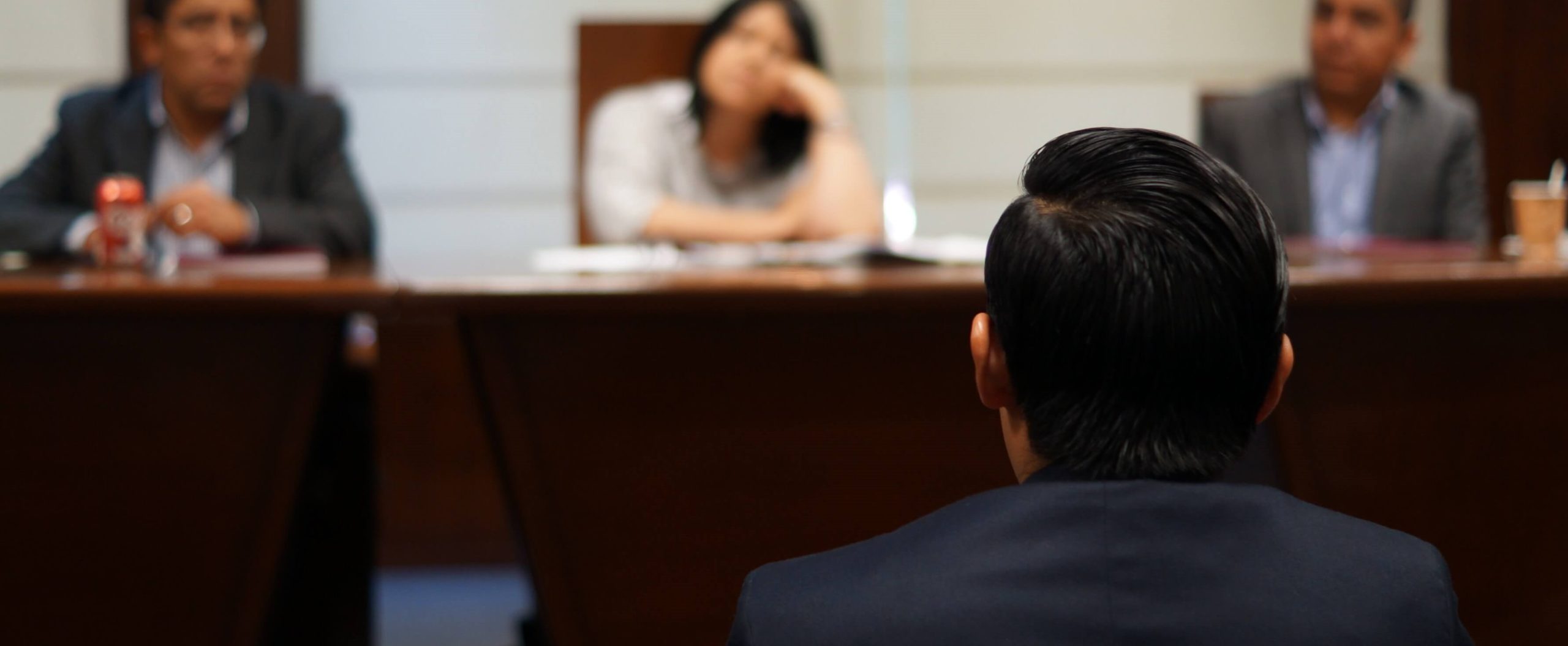
Analysis: Berroteran v. Superior Court Establishes Procedure for Determining Whether Former Testimony Hearsay Exception Has Been Met
To clear any surrounding confusion regarding the application of Section 1291(a)(2), the Berroteran court set out the following approach for trial courts to use in determining whether an exception under this provision is met:
Intent of Deposition Use at the Outset
If the parties intended to take the deposition as a means to preserve testimony and use it as trial testimony, it can be assumed that “all counsel had, at that deposition, a right and opportunity to examine the declarant with an interest and motive similar to that which the party would have at trial in a future case,” thus meeting the requirement established by Section 1291(a)(2).[28] This would also shift the burden of proof to the party opposing the admission of the prior deposition testimony.[29] Furthermore, while videotaping a deposition could be a relevant factor in determining motive and intent to cross-examine a witness, it is not dispositive.[30]
Subsequent Agreement on Deposition Use
Absent an initial agreement between the parties concerning the designation of deposition testimony at trial in the future, the court should inquire whether the party seeking admission provided evidence that such an agreement was subsequently reached.[31] Such an agreement can be shown through the reporter’s deposition transcript or a later document memorializing the agreement, for example.[32]
Furthermore, an agreement between the parties at the end of a deposition regarding its use in a later specific related case other than the one presently seeking to introduce it should be considered to see if the now-objecting party agreed to its use in some future related case, implying it had the right and opportunity to cross-examine the declarant with an interest and motive similar to that which it has in the present case.[33]
Practical Factors
In situations lacking clear evidence that the parties understood the deposition was intended for purposes other than discovery, prior deposition testimony at trial is generally inadmissible.[34] To overcome this admission bar, the court should consider practical considerations raised by the party seeking admission, including:
Timing and Special Circumstances
Typically, parties are better able to cross-examine the witness the further along they are in the discovery process.[35] However, this is not limited to the discovery conducted for that specific case, as being “educated by discovery conducted in earlier, similar lawsuits” also puts parties in a better position to conduct cross-examination.[36] Furthermore, special circumstances, such as an anticipated mediation or settlement conference, may incentivize a party to cross-examine a deponent more thoroughly in an effort to expose the opposing party’s weaknesses.[37]
Relationship Between Deponent and Opposing Party
A party’s interest in cross-examining a deponent depends on how closely aligned their positions are.[38] There is typically little to no interest in cross-examining an aligned witness — at the deposition and potentially at trial, too — to avoid revealing unnecessary information or case weaknesses.[39] Conversely, an antagonistic relationship between the parties — such as ones where a prior relationship ended or has gone sour — is more likely to create a substantial interest in cross-examination.[40]
Anticipated Witness Availability
Expecting a witness to be available at trial diminishes the motive to cross-examine them at a deposition, and the converse is true as well.[41] The court should consider whether the party objecting admission had reason to believe the witness would be unavailable at trial, for example like if the deponent is ill, which would necessitate relying on the deposition testimony at trial and motivate them to cross-examine accordingly.[42] Additionally, parties should be aware of statutory rules, such as Code of Civil Procedure § 2025.620, which allow the admission of prior deposition testimony at trials held subsequently irrespective of witness availability.[43]
Conduct
The court should consider evidence of intent to preserve deposition testimony for trial, particularly by the party opposing its admission, such as videotaping the deposition or referring to its future use as “testimony for the jury.”[44] Furthermore, the extent to which the opposing party examined the deponent, whether thoroughly or not at all, may serve as evidence reflecting the interest and motive the party would have at trial — although sometimes a party may have minimal interest in examining the deponent at trial, so a limited cross-examination at the deposition may accurately reflect its motive and interest at trial.[45] The level of cross-examination is evidence of potential motive but is not an independent factor in the court’s analysis.[46]
Designated Testimony
Because there are strategic reasons affecting a party’s interest and motive to cross-examine a witness, the “adverse or confusing nature of particular deposition testimony does not necessarily demonstrate an interest and motive to cross-examine” the witness at the deposition, alone.[47] The trial court may decide if the opposing party had a similar motive and interest to examine the witness at the deposition as it would at trial if the party seeking admission provides evidence of such interest regarding the particular testimony in question.[48]
Similarity of Position
There is no presumption of similarity of interest and motive solely due to the similarity of a party’s position or due to the similarity of the deposition testimony’s substance to the present litigation; it is only a factor as echoed by the Legislature’s official comment.[49]
Still Have Questions About the Former Testimony Hearsay Exception? Let Us Help.
California Evidence Code 1291 is a complicated statute with the potential to cause confusion about whether hearsay is admissible in court. If you are having trouble determining whether using deposition testimony at trial will be protected under the former testimony hearsay exception, call our lawyers today to request a free consultation.
Sources
[1] Cal. Evid. Code § 1291 (West).
[2] Id.
[3] Berroteran v. Superior Ct., 12 Cal. 5th 867, 875 (2022).
[4] See id. at 875.
[5] See id. at 876.
[6] See id. at 879.
[7] See id. at 876.
[8] See id. at 876, 884. Ford did not object to the admission of the videotaped depositions in the California opt-out litigation. Id. at 883.
[9] See id. at 876.
[10] See id. at 877, 904.
[11] See id. at 880.
[12] See id. at 880-81.
[13] See id. at 890.
[14] See id. at 894.
[15] See id. at 891–92.
[16] See id. at 892.
[17] See id. at 891; § 1291. Former testimony offered against party to former proceeding, West’s Ann.Cal.Evid.Code § 1291.
[18] See Berroteran at 892.
[19] See id.
[20] See § 1291. Former testimony offered against party to former proceeding, West’s Ann.Cal.Evid.Code § 1291.
[21] See Berroteran at 892.
[22] See id. at 892–93.
[23] See id.
[24] See id. at 894.
[25] See id.
[26] See id. at note 21, quoting Haydock & Herr, Discovery Practice (221-1 supp.), Deposition to Preserve Testimony, § 17.01[B].
[27] See id. at 894, 898.
[28] See id. at 900–01.
[29] See id. at 901.
[30] See id. at 897.
[31] See id. at 901.
[32] See id.
[33] See id.
[34] See id.
[35] See id. at 902.
[36] See id.
[37] See id.
[38] See id.
[39] See id.
[40] See id.
[41] See id.
[42] See id.
[43] See id.
[44] See id. at 903.
[45] See id. at 903, note 32.
[46] See id. at note 32.
[47] See id. at 903.
[48] See id.
[49] See id. at 903–04.


